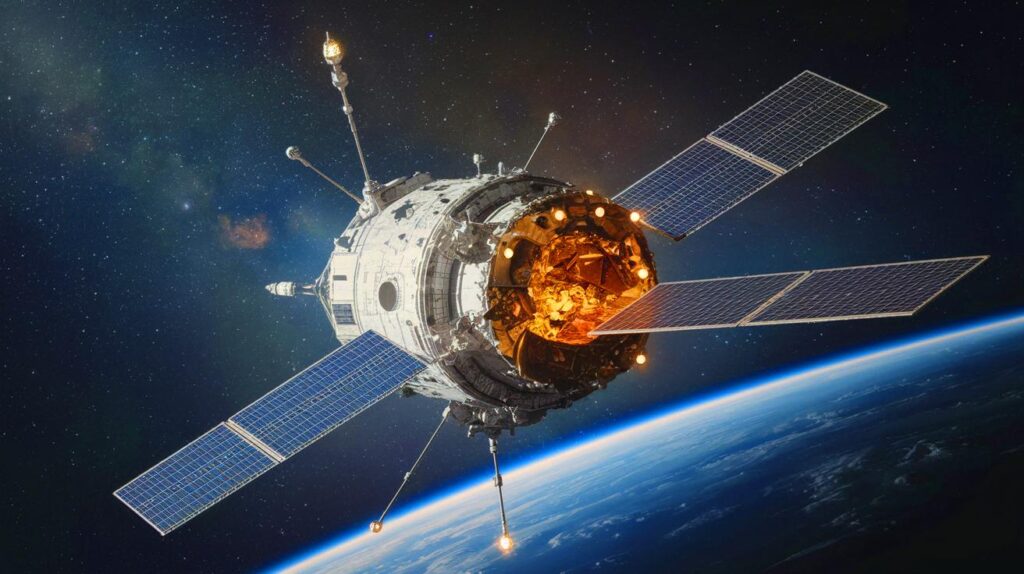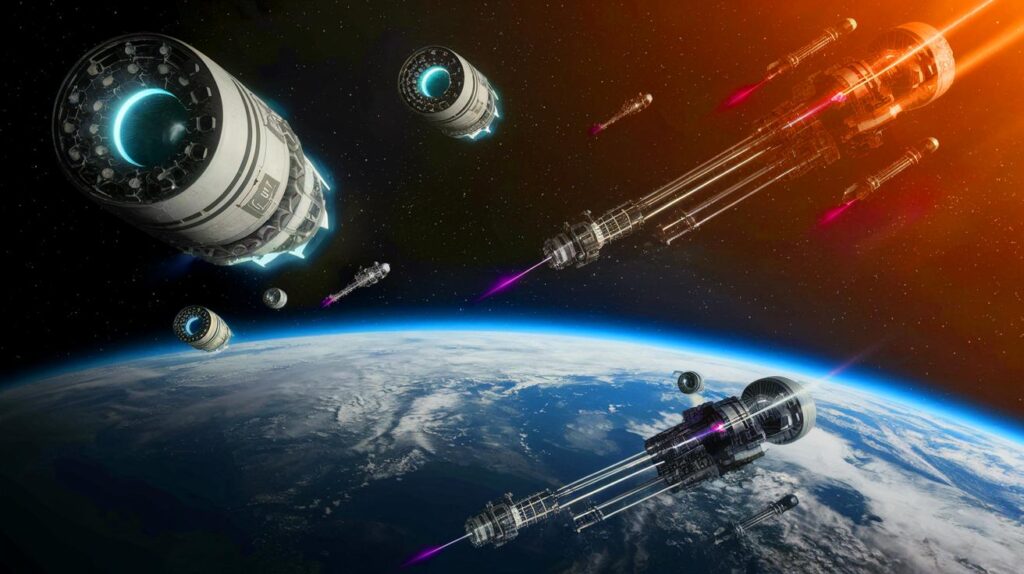| IN BRIEF |
|
Iconic space missions, such as the Voyager probes and the Curiosity and Perseverance Mars rovers, owe their longevity to a revolutionary nuclear technology: radioisotope thermoelectric generators (RTGs). These “nuclear batteries” enable spacecraft to operate far from the Sun, where solar panels become ineffective. Let’s explore how these devices have transformed space exploration.
RTGs: A Battery Powered by Radioactive Decay
A radioisotope thermoelectric generator (RTG) is a compact and durable energy system. Unlike conventional batteries that rely on chemical reactions, RTGs utilize the heat released from radioactive decay to generate electricity. The primary isotope used is plutonium-238 (Pu-238).
Pu-238 decays independently, emitting alpha particles that create a steady flow of heat. This heat is converted into electricity using the Seebeck effect. When two conductive materials are exposed to different temperatures, an electric current naturally forms. This effect is harnessed by keeping one side of the RTG hot near the decaying plutonium while exposing the other side to the cold of space.
RTGs are ideal for long-duration missions, especially beyond Jupiter, where sunlight is too weak for solar panels. The slow decay of Pu-238, which loses half of its radioactivity in about 90 years, allows RTGs to power a spacecraft for decades.
A Historical Overview of RTGs
The principles behind RTGs date back to 1821 when German physicist Thomas Seebeck discovered how temperature differences create electric currents. It wasn’t until the 1950s that nuclear engineers like John Birden and Ken Jordan at the Mound Laboratory of Monsanto turned this concept into practical hardware.
In 1961, the first RTG was launched into space aboard the U.S. Navy’s Transit 4A satellite, utilizing 96 grams of Pu-238. These compact power sources quickly became the preferred choice for NASA for long-duration missions in extreme environments.
RTGs have also been used on Earth in remote locations such as weather stations or uncrewed lighthouses, where regular electricity supply was impossible. They have even found medical applications in certain pacemakers for extended lifespans.
Why Nuclear? The Limitations of Solar in Deep Space
Near Earth, solar panels capture enough light to power spacecraft systems, such as satellites in low orbit or lunar missions. However, as you move away into the outer solar system, beyond Mars or Jupiter, solar flux decreases, making standard panels less viable.
Even on Mars, dust and shorter days can hinder solar production. NASA’s Curiosity and Perseverance rovers utilize RTGs to ensure a constant power supply and provide heat to sensitive electronic components during chilly Martian nights.
The Voyager program perfectly illustrates the longevity of RTGs. The Voyager 1 and 2 probes, launched in 1977, continue to operate at the fringes of interstellar space, billions of kilometers from Earth. Although their plutonium reserves have decreased, they still transmit data more than four decades later, demonstrating the effectiveness of RTGs.
The Promising Future of RTG Technology
RTGs remain the preferred solution for long-duration space missions that must contend with the vacuum and cold of deep space. While research continues into new energy technologies, such as advanced solar panels, nuclear reactors, and improved batteries, RTGs have repeatedly proven their reliability.
The main drawback of RTGs is the scarcity of Pu-238, which can be expensive and challenging to produce. Nevertheless, as humanity looks to missions beyond Jupiter, visits to the moons of Saturn, or deep asteroid explorations, RTGs will likely continue to play a crucial role.
In conclusion, RTGs have been essential to the success of humanity’s boldest space missions. Their ability to provide constant and reliable energy in hostile environments is unparalleled. As we contemplate the future of space exploration, how can we ensure a sustainable supply of Pu-238 to support these incredible technological achievements?








